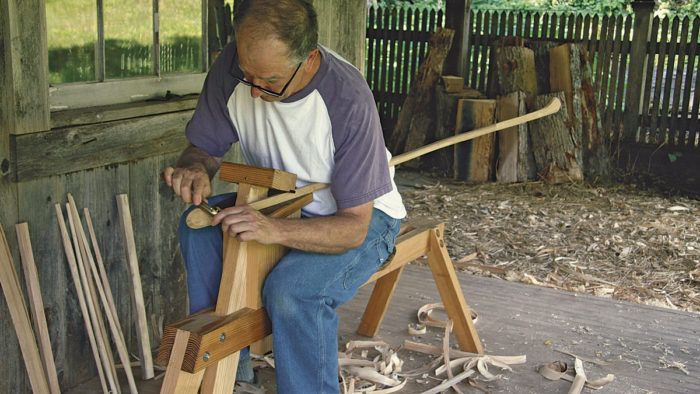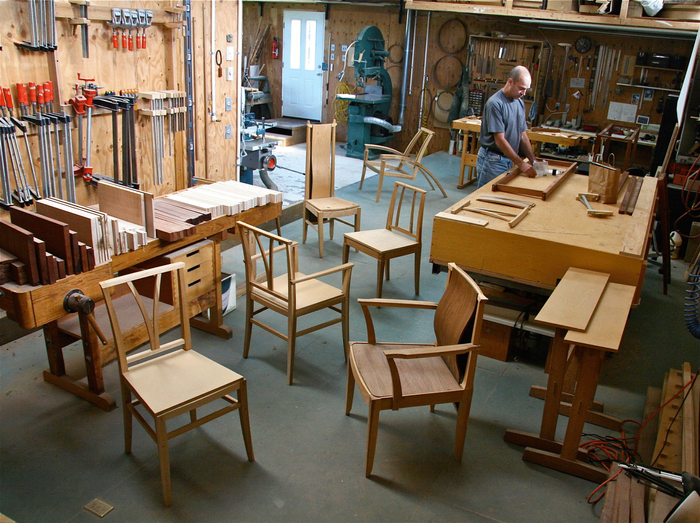How to Ride a Shaving Horse
With practice, and these tips from Curtis Buchanan, using the shaving horse will become second nature.

Synopsis: Learn to use this classic chairmaker’s tool with advice from a craftsman who uses one every day. Basically a giant vise, the shaving horse grips the work between its head and body and is operated using a treadle while you are sitting down. Push on the treadle with your foot to grip the stock; take off the pressure to release it. With practice, and these tips from Curtis Buchanan, using the shaving horse will become second nature.
Over the past 34 years, I calculate that I’ve spent over 21,000 hours at work on my shaving horse. Why do I still look forward each week to my time on it? I’m sure simple-mindedness plays a role, but I like to think it goes beyond that. Partly it’s that it does its job so beautifully, and partly that it just feels great to use it.
Ready the ride
It doesn’t hurt that mine’s on the porch of my shop for most of the year, so I can work outdoors. And it’s always appealing that I get to sit when I use it. I typically make one chair at a time and it takes me a week or two. During this time I’m splitting logs, turning, boring holes, assembling, and finishing—all processes performed standing up. So it is a pleasure to turn to the shaving horse and work sitting down. But even though there’s a meditative feeling to shaving spindles on the horse, it’s not a form of rest—using the shaving horse is totally engaging.
Shaving spindles
The shaving horse is basically a giant vise, and it works seamlessly. The harder you pull on a drawknife, the harder you automatically push on the treadle with your foot. This tightens the grip on the stock and prevents it from slipping out of the jaws. There should be just a little clearance between the head and the workpiece. The smaller the distance the head has to travel to contact the workpiece, the tighter its grip will be. When you need to rotate the stock, simply let your foot off the treadle; a properly balanced head will swing back. Rotate the stock and you’re back in business, with the stock clamped securely and ready for the next cut. This motion becomes automatic and you’ll develop a distinctive rhythm.
Clamping curves
There are about as many species of shaving horses as there are users, many of them customized to fit an individual’s
size and work style. But the broad range of horses can be divided into two basic styles. The Swiss, or dumbhead, style
horse has a single arm that penetrates the work platform. A thick block of wood—the dumbhead—at the top of the arm serves as the upper jaw of the clamp. The English-style horse has a pair of arms that straddle the work platform, and the upper jaw is a crossbar between the arms. I use the Swiss type, which I think is more versatile. The one I’m using now was designed and made by Tim Manney, and it’s the best I’ve ever used.
For the full article, download the PDF below:
Fine Woodworking Recommended Products

Veritas Micro-Adjust Wheel Marking Gauge

WoodRiver Router Bit Storage Case

Bahco 6-Inch Card Scraper




















Comments
The link in the email was for a video. But there is no video, just the PDF.
Sorry for the confusion, that was an error.
Log in or create an account to post a comment.
Sign up Log in